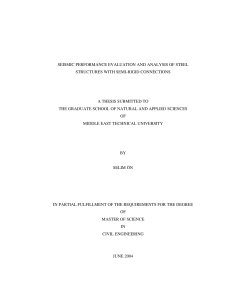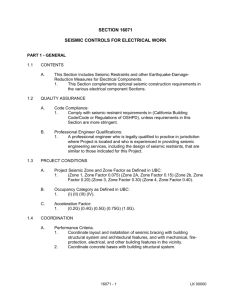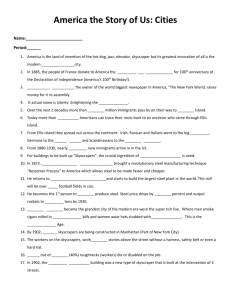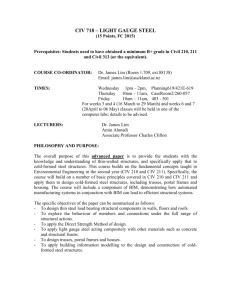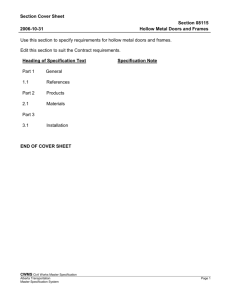Read seminar abstract here. - Heriot
advertisement
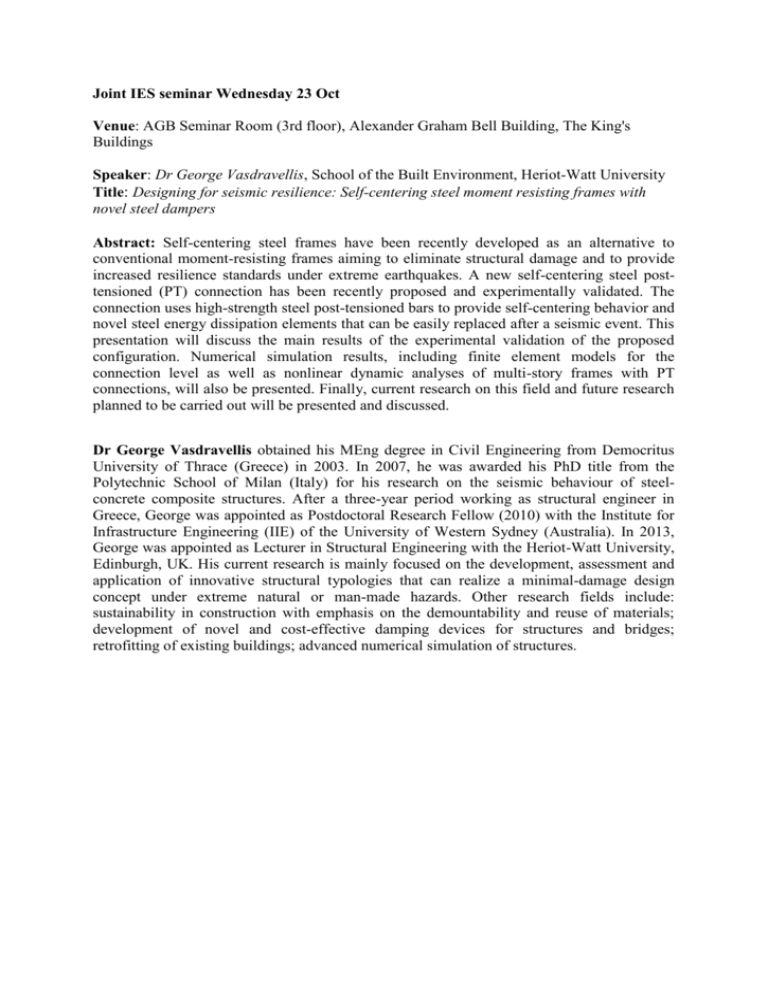
Joint IES seminar Wednesday 23 Oct Venue: AGB Seminar Room (3rd floor), Alexander Graham Bell Building, The King's Buildings Speaker: Dr George Vasdravellis, School of the Built Environment, Heriot-Watt University Title: Designing for seismic resilience: Self-centering steel moment resisting frames with novel steel dampers Abstract: Self-centering steel frames have been recently developed as an alternative to conventional moment-resisting frames aiming to eliminate structural damage and to provide increased resilience standards under extreme earthquakes. A new self-centering steel posttensioned (PT) connection has been recently proposed and experimentally validated. The connection uses high-strength steel post-tensioned bars to provide self-centering behavior and novel steel energy dissipation elements that can be easily replaced after a seismic event. This presentation will discuss the main results of the experimental validation of the proposed configuration. Numerical simulation results, including finite element models for the connection level as well as nonlinear dynamic analyses of multi-story frames with PT connections, will also be presented. Finally, current research on this field and future research planned to be carried out will be presented and discussed. Dr George Vasdravellis obtained his MEng degree in Civil Engineering from Democritus University of Thrace (Greece) in 2003. In 2007, he was awarded his PhD title from the Polytechnic School of Milan (Italy) for his research on the seismic behaviour of steelconcrete composite structures. After a three-year period working as structural engineer in Greece, George was appointed as Postdoctoral Research Fellow (2010) with the Institute for Infrastructure Engineering (IIE) of the University of Western Sydney (Australia). In 2013, George was appointed as Lecturer in Structural Engineering with the Heriot-Watt University, Edinburgh, UK. His current research is mainly focused on the development, assessment and application of innovative structural typologies that can realize a minimal-damage design concept under extreme natural or man-made hazards. Other research fields include: sustainability in construction with emphasis on the demountability and reuse of materials; development of novel and cost-effective damping devices for structures and bridges; retrofitting of existing buildings; advanced numerical simulation of structures.
